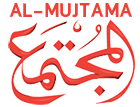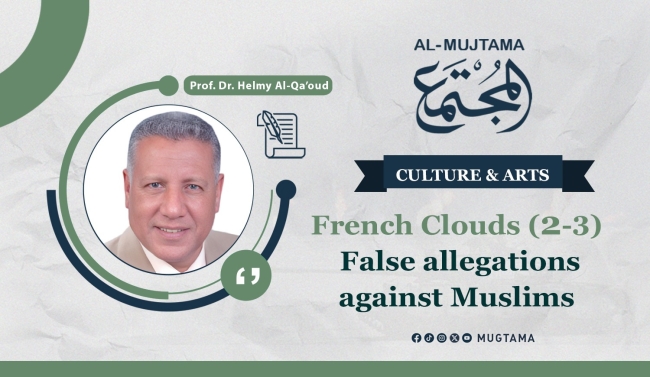Novel's Theme
The idea of the novel generally strives to highlight what is called the oppression of Christians in Egypt and their steadfastness on their principles (!) to confront the Islamic injustice that forced them to walk a different path from that of Muslims, through the command: "Include, O Christian!" which means to walk to the north! The author aimed for the phrase “Include, O Christian” to be the title of her novel, but her friend "Mohamed Afifi," the author of the novel " Yaaqoub," did not favor this title and instead chose the current title: "French Clouds." It seems that for some reason, they found in this phrase an opportunity to attack the nature of Islam’s tolerance and the morals of Muslims, repeating it on various occasions, despite the fact that the Prophet (peace be upon him) received a delegation of Christians from Najran in his mosque in Medina, married a Christian woman named Maria the Copt, and Islam permitted Muslims to marry women of the People of the Book, those of the Gospel and Torah.
Islamic Teachings on Coexistence
Before all that, it allowed Muslims to eat from the food of the People of the Book and to interact with them normally as long as they do not commit aggression, with numerous verses supporting this, including, for example: (Allah does not forbid you from dealing kindly and fairly with those who have neither fought nor driven you out of your homes. Surely Allah loves those who are fair.) ( Al-Mumtahanah:8) In the noble hadith from the Prophet (peace be upon him): "Whoever wrongs a protected person, diminishes their rights, burdens them beyond their capacity, or takes something from them without their consent, I will be their adversary on the Day of Judgment."(2) And it is also said: Whoever harms a protected person has harmed me, and whoever harms me has harmed.(3)
Repetitive Themes in the Novel
The narrative insists on repeating the phrase "Get involved, O Christian" through the voices of some characters, to justify the betrayal of the homeland and the joining of the murderous invaders in Napoleon's campaign. Furthermore, it aims to deepen the notion of the alleged persecution of the community, without us seeing the counterpart from the other side in their lives and behaviors, except when associated with brutality and the killing of the residents of the Christian quarter.
Persecution and Double Standards
Today, the persecution of the overwhelming majority in favor of the sect and for its sake. Churches are open around the clock, while mosques open a few minutes before prayer and close after it ends. The authority dictates the topics and duration of Friday sermons, and no one can approach the priests' sermons even though they sometimes incite isolation and separation, distorting Islam under the guise of false religions.
No Muslim preacher or lecturer dares to address the nature of Christianity as mentioned in the Holy Quran. Leaders and writers of the sect can accuse Islam of extremism, terrorism, fundamentalism, discrimination, and racism. The authority intervenes to prevent the publication of books, articles, and research that discuss sectarian issues, especially those related to its secessionist tendencies, which claim that Muslims are guests and Christians are the rightful owners of the country.
At the same time, the sect is granted the opportunity to publish the books it desires, write articles that talk about citizenship (meaning the negation of Islam) and the separation of religion from the state, ridicule the Islamic caliphate, and advocate against its re-establishment, while the world is forming groups for economic, cultural, or political purposes (the European Union, Francophonie countries, Commonwealth countries, BRICS countries, etc.).
A Fictional Story
I do not wish to elaborate on the reality that has transformed the vast majority into a marginalized community, "encompassed" before the billionaires of the sect and its men who control more than 65% of domestic trade alone. I will suffice with presenting the fictional story surrounding the phrase "encompass, O Christian." A page calling itself "Lovers of Anba Bula, the First of the Travelers" on Facebook published the following on July 28, 2018: Move aside, Christian!" This phrase was used against the Copts to force them to take the left side of the road as they are dhimmis, and it was also known in the Levant.
Incident in 1844
In March 1844, when the Copts had begun a new era of equality under Muhammad Ali, this incident occurred. A person responsible for tending to the donkeys obstructed the path of an archon Copt named their master Bishay as he was on his way to the church in Damietta. That church was located among the graves. Without any reason other than bigotry, he got into a fight with the saint and said to him, "Move aside, Christian!" their master was a wood trader, gentle, calm, and loved by everyone. The situation escalated, and their master was accused of insulting Islam and the Prophet of Islam (it seems this accusation has been ready for a long time). Of course, the public was incited, and one of the clerics stirred up emotions, leading to their master Bishay's arrest.
Torture and Martyrdom
They beat him severely, slapped him, and dragged him until his face was covered in blood. A few days later, they brought him before Khalil Agha, the governor of the city, along with the judge, clerics, and the chief of the traders. The matter was simply that he would abandon his religion and convert; otherwise, death would be his fate. Their master, their master Bishay, held on to Christ and the cross, and here the order was issued for him to be whipped 500 times and killed, prompting the city to rise against the Christians, both Copts and foreigners. In front of the city governor, their master Bishay was beaten with shoes and dragged down the stairs, and the bones of his face were shattered, while the mob shouted, “Kill him! Burn him!” According to a contemporary manuscript of the event, we find that the martyr of Christ endured a lot.
Continued Torture
On the fourth day, they repeated the torture where they stripped him of his clothes to mock him and paraded him through the streets of the town, dressing him with a sheep's stomach on his head, soiling his body with mud, and hanging two filthy mops on his head, along with two iron hooks in his sides with pieces of flesh. They tied two dogs and a cat to him to attack and gnaw at his flesh. They mounted him on a buffalo upside down and hung a cross, soiled with dirt, on his beard, parading him through the entire town as if he were being led to slaughter!
Final Moments
And the saint remained patient at all times, repeating, "O Pure One. O Jesus, and before His spirit was surrendered, He asked a friend who was beside Him to bring a chair for the noble lady who accompanied Him in His sufferings, and it was none other than the Mother of Light who revealed herself to Him before His departure. The last pain He endured was having His face splashed with boiling tar, and then He departed carrying His sufferings and the crowns of martyrdom and virginity in March 1844. His body appears, as recently discovered, to have departed at the moment boiling oil was poured over Him; as it seems in the image, His shoulders are raised and His face is turned to the left, as if He is avoiding something that was buried in the tombs of the Copts. This was a reason for raising crosses at Coptic funerals and on the domes of churches.
Questioning the Credibility
It is clear from the fairy tale that it does not rely on a credible source. The author of the story claims to have relied on a contemporary manuscript of the event. Okay. What is the name of this manuscript, who is its author? Where is it located? Are there incidents that resemble this event since Islam entered Egypt? Does the donkey in the story represent Islamic legislation?


